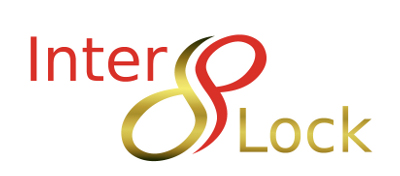
Cyber Security Implementation
Every organization should continuously balance risk and reward to find ways to achieve the best returns at an acceptable level of risk. For IT security professionals, this is the most difficult part of the job: objectively analyzing risk in the context of the business goals and possible return on investment.
Process driven data security
Optimize and protect business processes
The common security model ingrained in today’s corporate world involves implementing a broad set of capabilities to protect against the most publicized threats of the day. This security approach results in the deployment of an array of non-integrated security tools. Not only do these tools lack the means to work together to effectively protect against today’s highly sophisticated and organized attacks, but they can hinder business operations, generate cost redundancies, create complexity, operate in isolation of business objectives and fail to provide appropriate metrics to allow today’s business-minded security executives to determine their effectiveness. Security should not be addressed in isolation from other business activities within the enterprise. Instead, it should be viewed from a business perspective — looking at security as a means to protect and enhance business processes. Most organizations have just a handful of business processes that make up 80 percent or more of their risk, while they might have many other processes that account for less than 20 percent of their risk. To align security efforts with business concerns, organizations should focus on securing those few processes that make up the bulk of the risk. They must also prioritize risks and vulnerabilities based on their potential to disrupt the business’ most critical processes. This strategy involves a level of planning and assessment to identify risks across key business areas, including people, processes, data and technology throughout the entire business continuum. Such planning can facilitate the design and building of a business-driven security blueprint and strategy that can act as an effective shield of defense for the entire organization — to meet business needs and optimize business results.
Secure business processes across all risk domains
IT decisions, like business decisions, are about getting the maximum return for a given level of risk. Several key security areas or domains need to be examined for their potential risk elements and impact. Within these domains it is critical for the organization to define and manage the maximum level of acceptable risk. No organization should attempt to remove all risk, but organizations must objectively analyze risk in the context of the business goals.
- People and identity — Businesses need to make sure people across their organization and supply chain have access to the data and tools that they need, when they need it, while blocking those who do not need or should not have access. Key business challenges that must be addressed in this domain deal with the ability to effectively manage the on-boarding and off-boarding of dynamic work forces, as well as the need to improve secure collaboration among customers, suppliers and business partners. Additionally, IT compliance continues to be a concern within organizations and is a significant driver for implementation of comprehensive user provisioning processes. An appropriate set of security controls should be put in place to successfully manage user privileges across multiple technology systems and to ensure that end users have access to the right IT resources, according to predetermined policies.
- Data and Information — Organizations need to support widespread electronic collaboration while protecting their critical data — whether it’s in transit or at rest. They need to understand where their critical data lives and have methodologies in place to manage all of the processes associated with classifying, prioritizing and protecting data. Effective information security starts with a risk management approach that balances risks and rewards against availability and confidentiality of data. This approach should be undertaken in a way that safeguards the value of all volumes of data that flow throughout the business from misuse and abuse. A key concern for many organizations is how to implement such a comprehensive data security solution with limited staff and expertise. Putting processes in place to achieve, measure and report on an organization’s IT compliance posture is an example of a process relative to securing data. Identifying, prioritizing and protecting sensitive data, as well as demonstrating effective security controls, are critical elements to enabling and protecting the value of information to the business.
- Network, server and end point — Proactive threat and vulnerability monitoring and management of an organization’s network, server and end points are critical to staying ahead of emerging threats that can adversely affect system components and the people and business processes they support. The need to identify and protect against emerging threats has dramatically increased with the rise in organized and financially motivated network infiltrations. For example, enterprises leverage virtual technology to support their goals of delivering services in less time and with greater agility. By building a structure of security controls within this environment, organizations can reap the goals of virtualization — such as improved physical resource utilization, improved hardware efficiency and reduction of power costs — while gaining peace of mind that the virtual systems are secured with the same rigor as the physical systems. The need to identify and protect against emerging threats has dramatically increased with the rise in organized and financially motivated network infiltrations.
- Applications — Organizations should proactively protect their business-critical applications and processes from external and internal threats throughout their entire life cycle — from design to implementation and production. This typically requires a combination of capabilities such as centralized authentication, security enabling development objects, access and audit policy management, web application vulnerability scanning, intrusion prevention and intrusion detection. Whether the application is internally focused or an externally facing application , clearly defined security policies and processes are critical to ensure the new application is enabling the business rather than introducing additional risk.
- Physical Infrastructure — Protecting an organization’s infrastructure means ensuring that its physical assets are also protected from security threats. Effective physical security requires a centralized management system that allows the monitoring of property, employees, customers and the general public. For example, securing the perimeter of the data center with cameras and centralized monitoring devices is critical to ensure access to an organization’s IT assets is managed. Therefore, organizations concerned about theft and fraud, such as banks, retail stores or public agencies, should define and implement an integrated physical security surveillance strategy that includes monitoring, analytics and centralized control. This approach enables organizations to extract intelligent data from multiple sources, respond to threats sooner than manually monitored environments, and reduce cost and risk of loss. Every organization should understand and manage risk in all five of these domains. Unfortunately, most security vendors tend to focus only on one or two domains, or worse, they only focus on securing a single technology within a domain. This results in point solutions that fail to provide protection across the business processes within the organization. It also leads to the creation of security silos that increase complexity, introduce redundancy, leave vulnerability gaps and ultimately fail to meet the organization’s overall business needs
Elevate IT security to a business-driven approach
Today’s executives are expected to manage risk in their areas of responsibility in the same way that CFOs manage risks in their domains. Security risks and the potential impact on IT need to be communicated to executive peers in business terms. Additionally, they need to align IT security controls with their business processes, monitor and quantify IT risk in business terms, and dynamically drive business-level insight at the executive level. They need to manage risk and orchestrate security operations in a way that enforces compliance and optimizes business results. As an organization secures its business processes, a business-driven approach needs to become the guiding influence for ensuring that all the different security domains work together in a holistic and synergistic manner, in alignment with the overarching business objectives. Otherwise, the organization’s risk stance becomes vulnerable due to misalignment of priorities between IT and the business strategy. Aligning IT security with a business-driven approach can also put organizations in a position to have their unique business objectives drive their compliance goals, rather than having compliance drive their business. Too many organizations invest significant time and money to ensure that they can comply with industry and government regulations, only to find out too late that their key business processes were still vulnerable to attack. Leveraging security management from a business-driven perspective enables them to successfully secure those business processes in a manner that inherently provides the necessary evidence to demonstrate compliance
Download Cyber Security Brochure
You may use the link below to download a brochure on our Security services.
Contact Us
For additional information on our encryption products or to arrange a demonstration of the Enterprise Edition, please contact us today.
